November 8, 2015
Martha O'Kennon
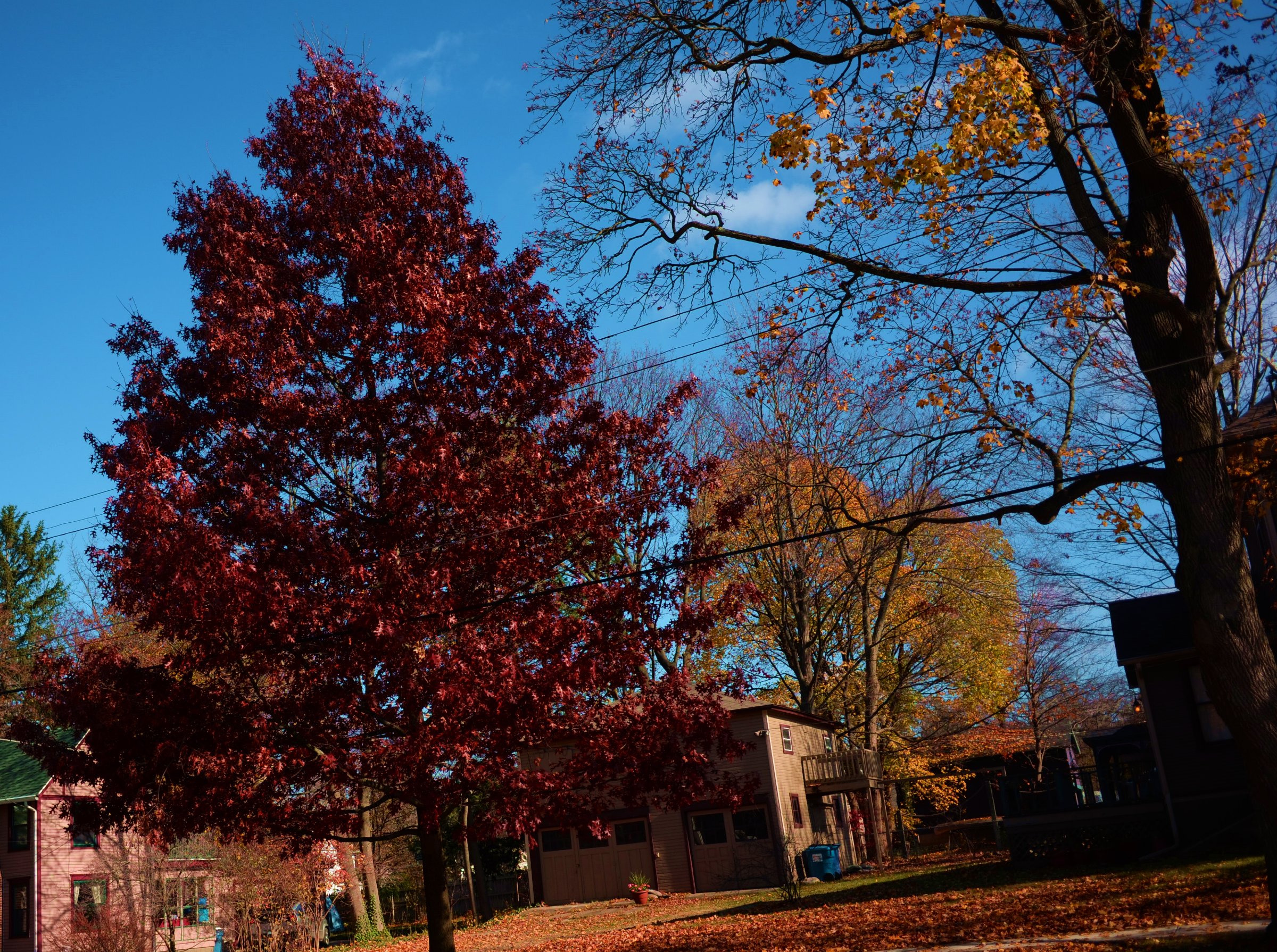
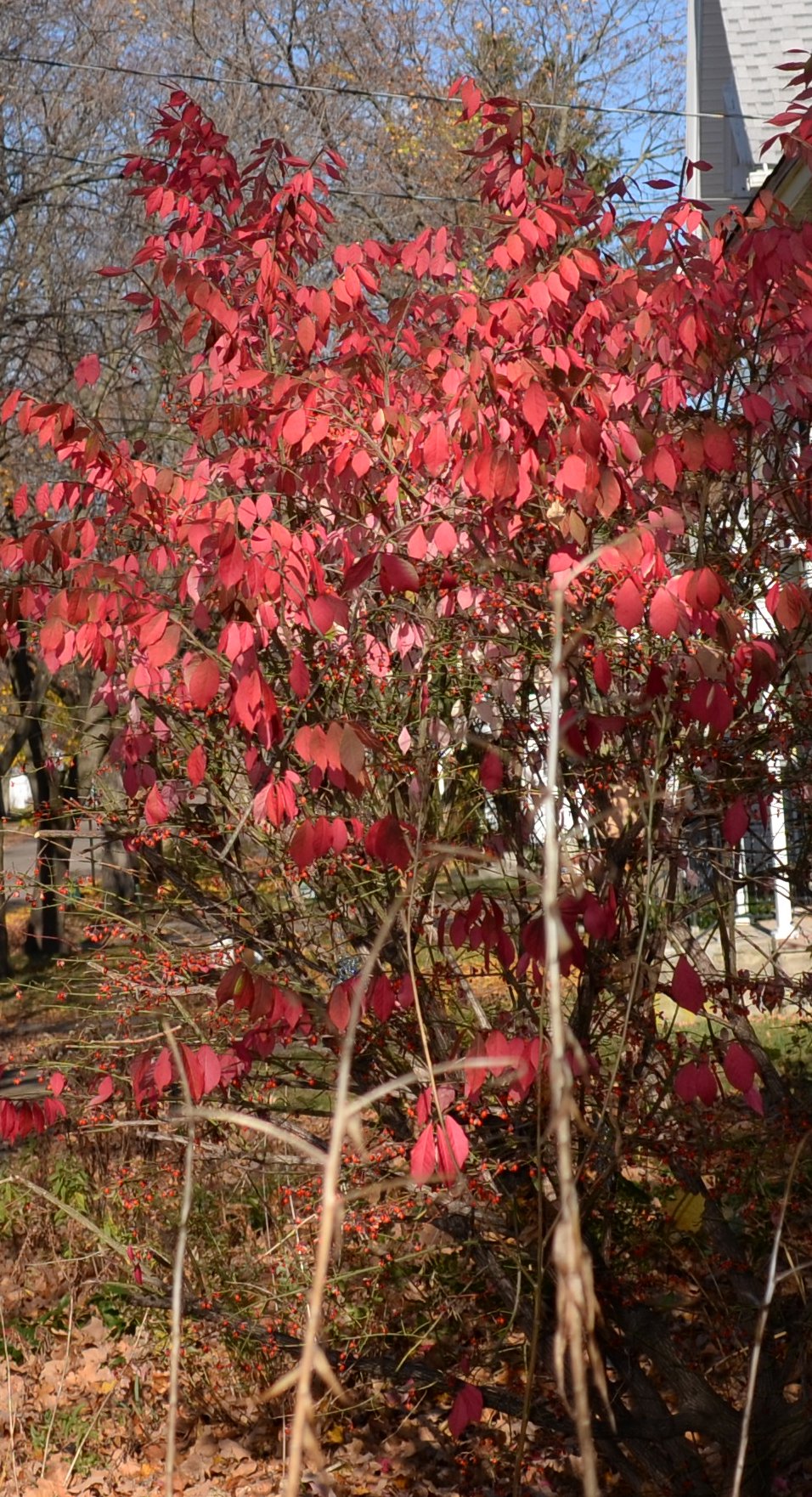
I must admit that the above picture of the red oak tree has been retouched to adjust the red of the leaves. This year the red oaks were quite red (this doesn't happen every year) - though not quite so red as sometimes. So I reddened it up a bit to show about how red it really was when it peaked. The euonymus leaves were a bit redder (and a lot less sparse) a week ago - but now they've dulled AND thinned. Still this picture is as is, unretouched. You must just use your lovely imagination to see them as they ideally were.
Remember that there is information in the name of the file for each image. You can see it by mousing over the image - look at the lower left of the screen.
I would try clicking on the image. If the little "+" sign appears, it means you can enlarge again. While it is in "+" mode, click on something you want to see more clearly and it will zoom to that section. Then the info is displayed in the address line above. If the image has been cropped
so that clicking on it doesn't result in a larger picture, you can always hit control plus to increase the size of the image.
A few ants are still to be seen, mostly while sunning themselves on the shop wall. Most of the arthropods showed up on that wall this week, except for two rather balmy days in which I could find specimens while wandering through the rest of the yard. This eastern carpenter ant has been a faithful friend all summer. That the little fellow with the big head is still out here may have something to do with the fact that several species of stink bugs are still around, and that there may be some fresh stinkbug eggs, and the little guy looks a lot like the little wasp who is a predator on stinkbug eggs. This means that we have now displayed the only ant AND the only wasp I saw all week. No bees either!
 black carpenter ant (Camponotus pennsylvanicus) 11 4 15.jpg)
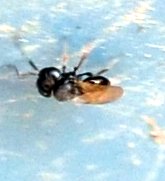
Beetles? Why yes, we had a few of those. I wonder if you remember the beetle that looked like a banana - yellow body with a dark handle? Here is one from May 5, and here it is now - but without the yellow body. Here is also a copper-metal covered beetle, and another very shiny black beetle.
 -- Lixinae -- Lixini -- Lixus 5 30 15aa.jpg)
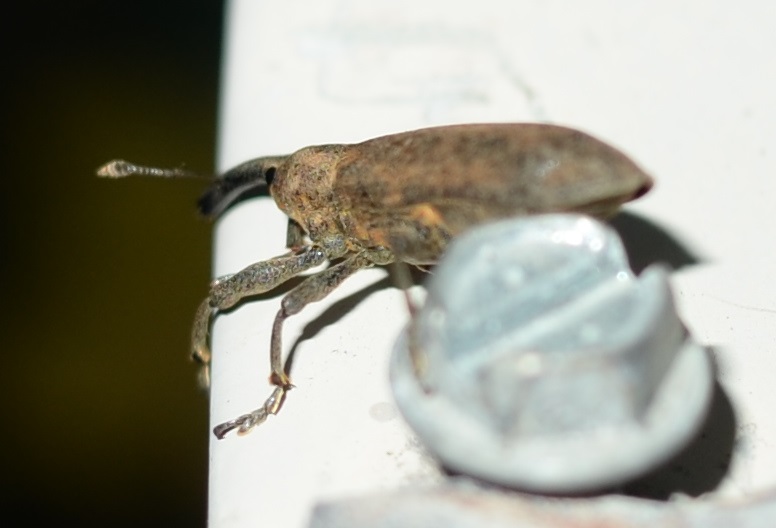
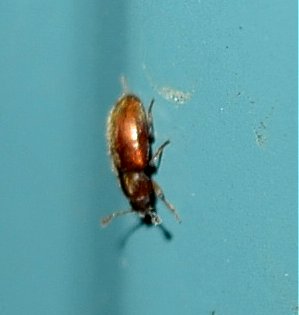
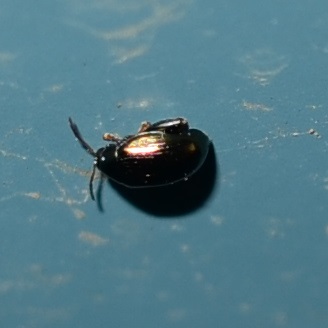
A couple of ladybug types: most likely, one of our beloved typical red ladybirds and one of the Asian stinky ones that like to live with us in the winter; and that very strangely articulated tortoise beetle.
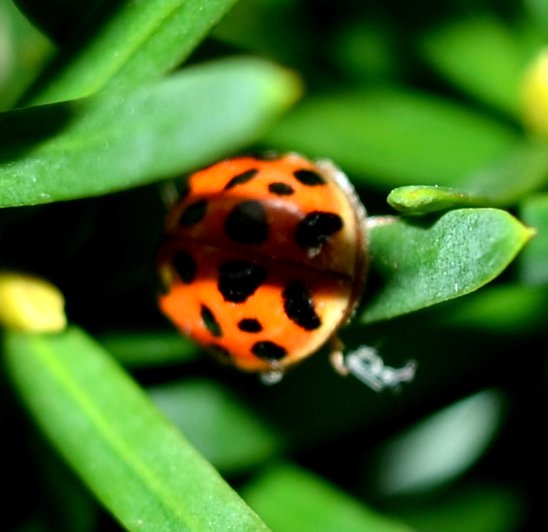
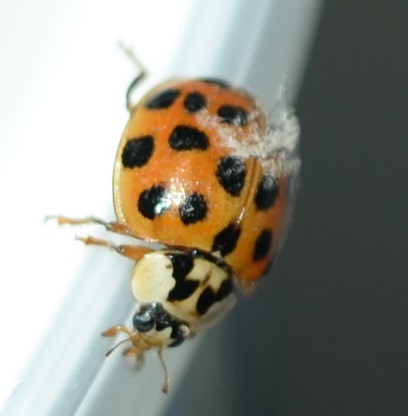
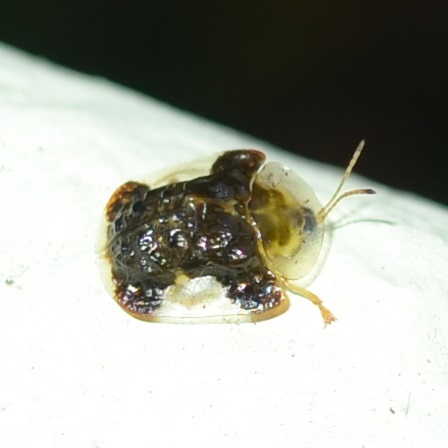
You know how every week it seems, especially lately, we have frequently laid eyes upon one of the kinds of assassin bug nymphs, either green, greysh, or orange-ish? Amazingly enough, this week I've seen at least one of several different kinds. So here is the green one (with the reddish streak) - look how fat its abdomen is; two views of the greyish one; and a brownish one.
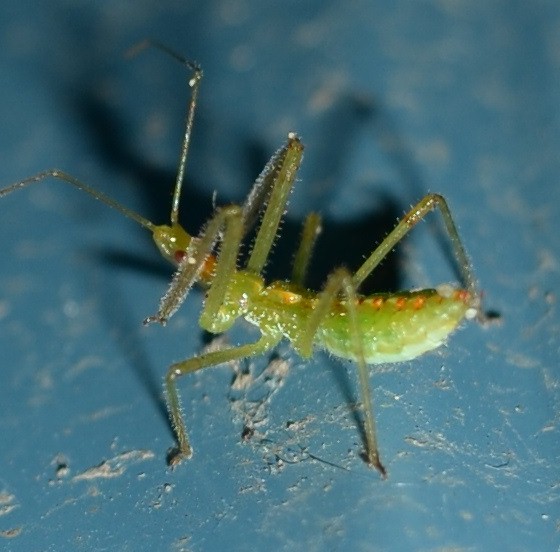
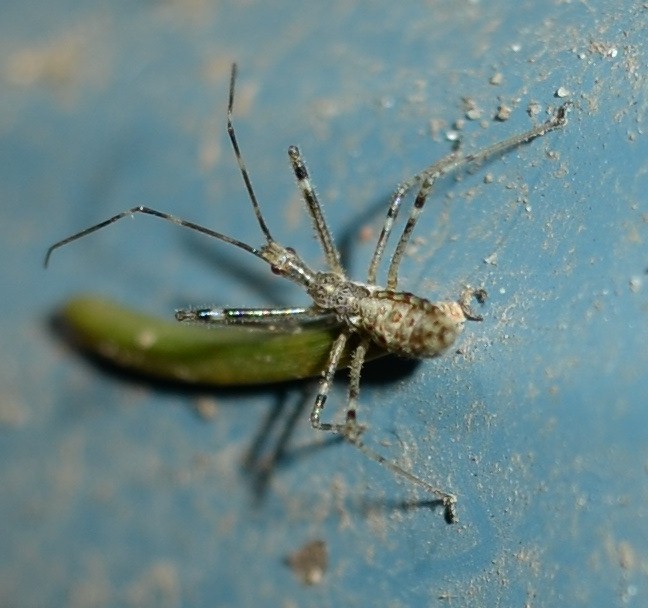
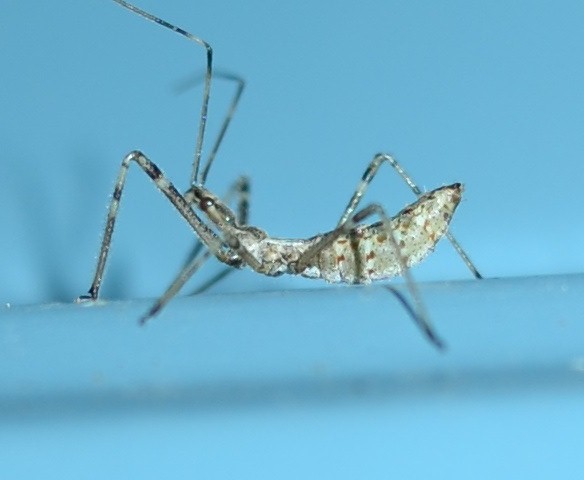
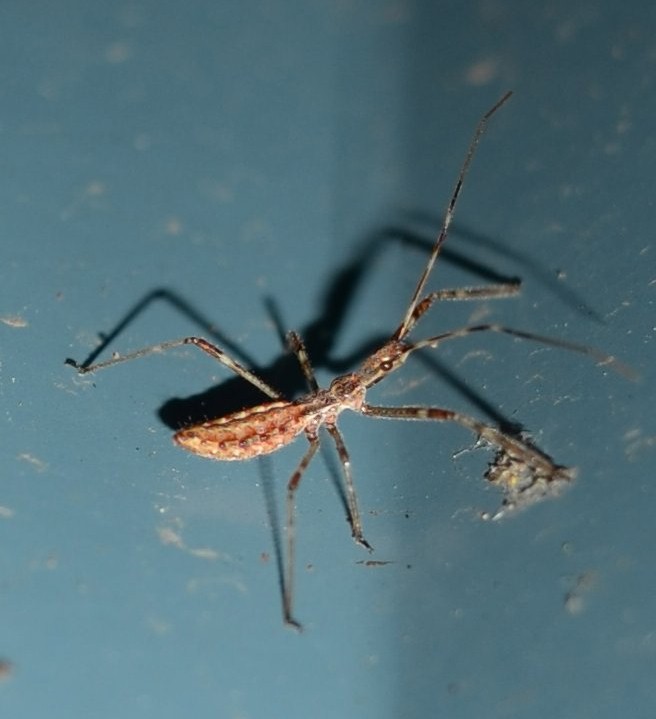
A few more bugs. This tiny soft white mystery bug seems always to be in the places the leafhoppers help. This black bug is a Mirid, possibly genus Capsus. This brown mystery (2 views) may be a kind of beetle. I'm still looking.
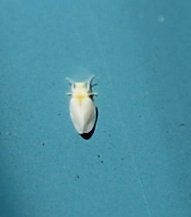
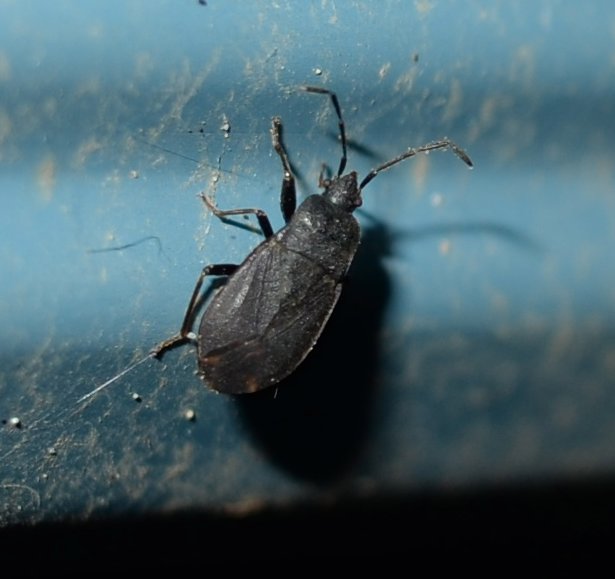
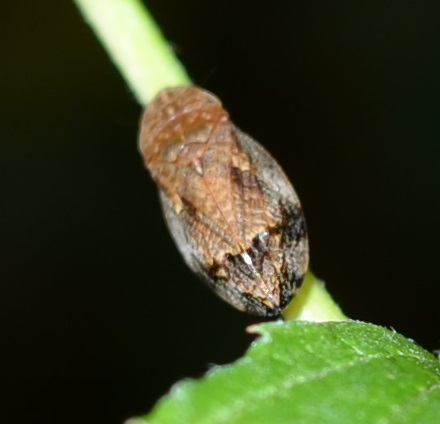
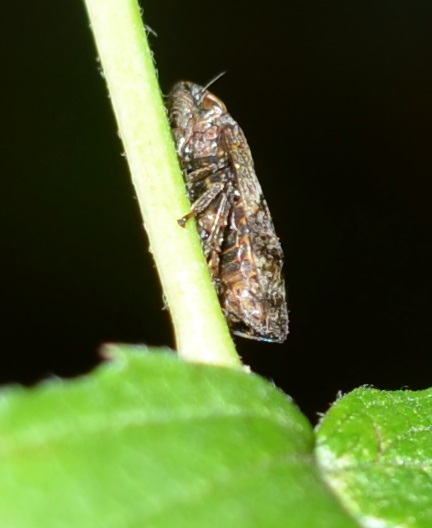
We have already seen this bug but not long enough to find the ID for it. Now try to answer this question? Doesn't the name damsel bug make you think of a beautiful bug waiting for her handsome prince to sweep her off her feet? Here you see her bent over her friend, the lacewing. Concern? Well, here you see what she is doing - with her long beak inserted into the lacewing. Soon it (the lacewing) will be an empty skin. Here is the damsel without its prey.
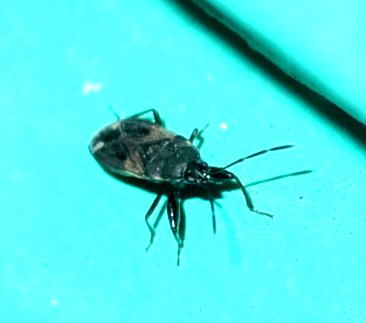
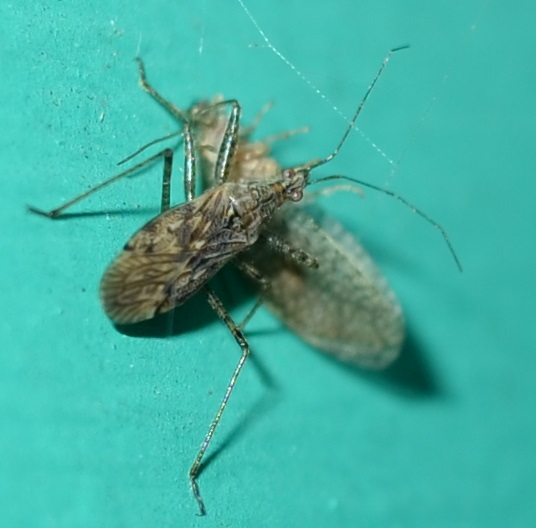
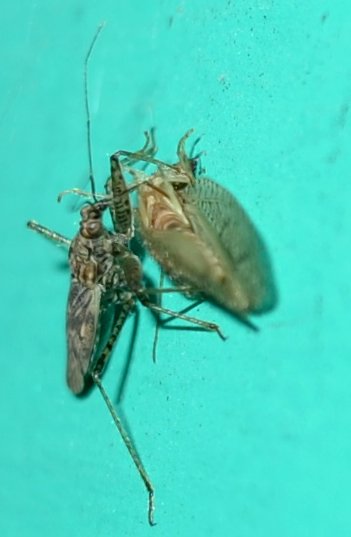
We did spot a few tiny leafhoppers. Here are some of them. First, one you saw last week, the Coelidia: then a mystery one, and yet another mystery one.
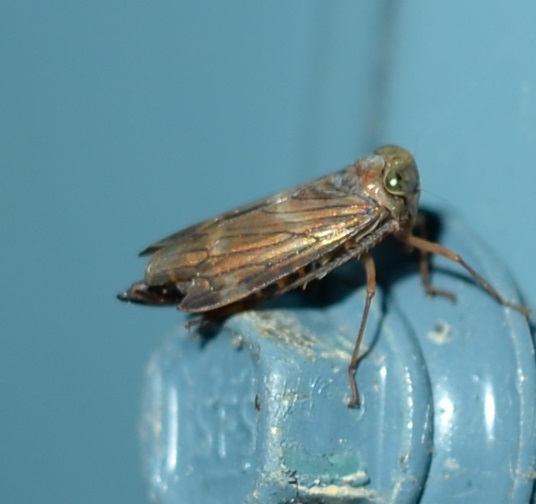
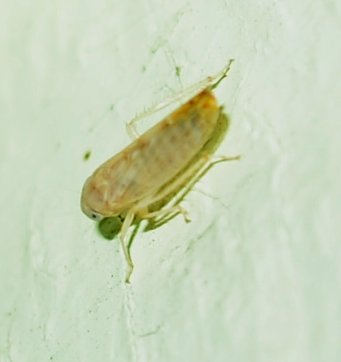
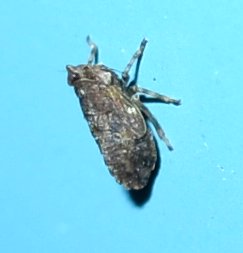
This very tiny nymph has been around (or some of its relatives have been) - finally I was able to get a decent image of it. According to all I've found to read on the subject, it is likely a baby stinkbug, perhaps of one of the species we've seen. And here are some of the adult stinkbugs. The middle one in the second row may be a brown marmorated (marbled) stinkbug. Herein lies a tale. Yesterday Dorothy Dickerson brought me a bug. She had done some reading and found that it may be a threat to some kind of crops. Mine bears an awful resemblance to the one in her jar. The last one is a rough stinkbug, but I haven't got the ID for WHICH rough stinkbug it is.
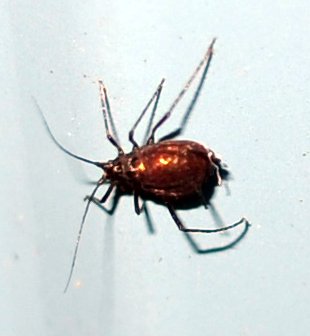
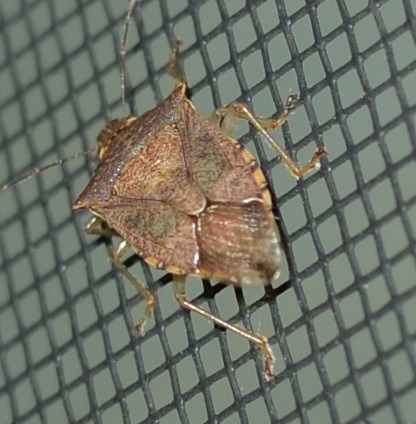
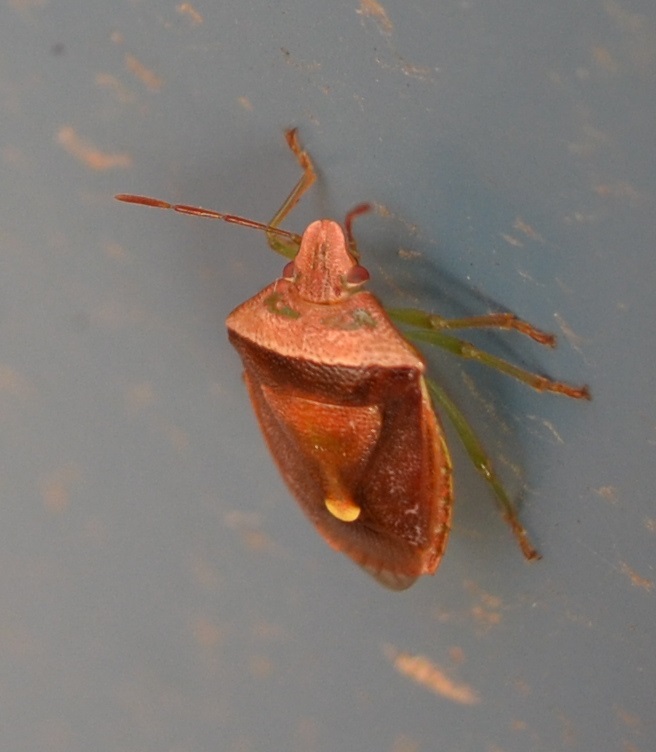
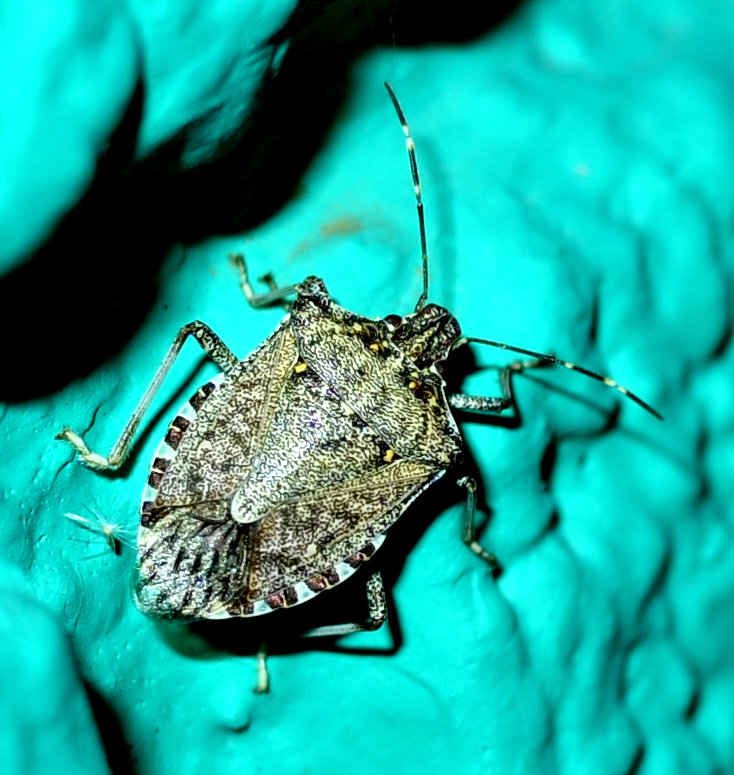
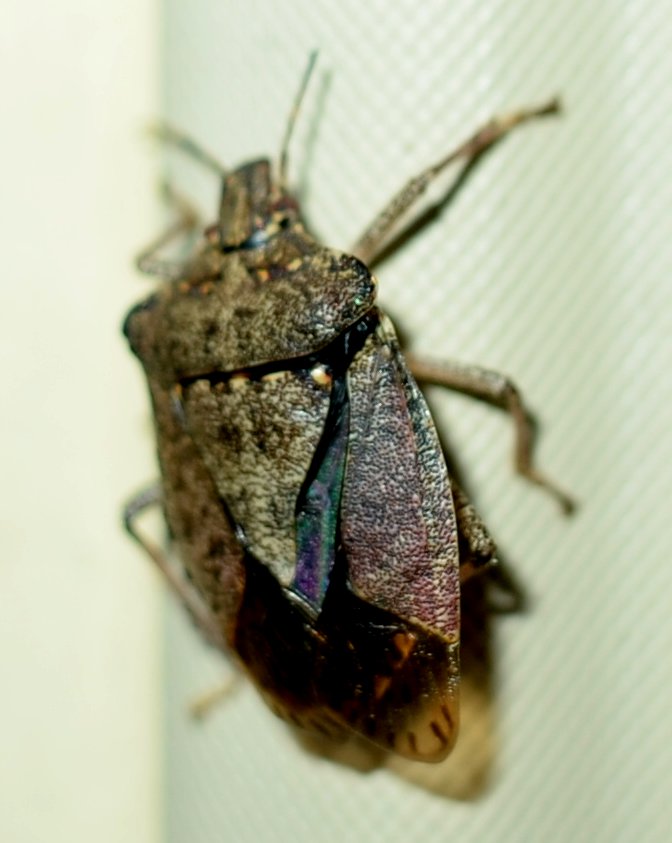
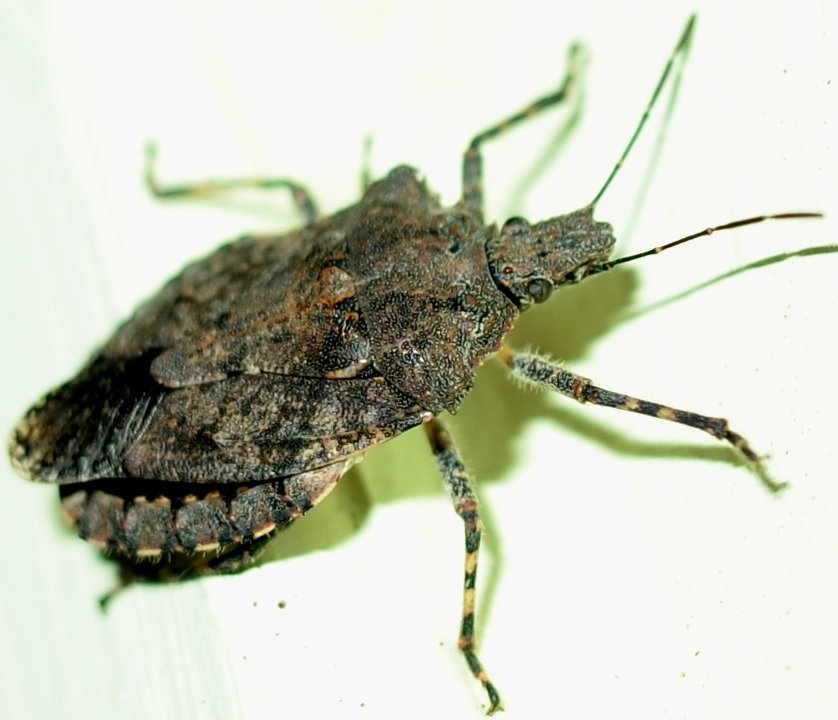
The handsome bug here is the Western conifer seed bug. This week there have been a multiplicity of them. One day I saw one in the front yard, one in the north yard and one in the back. But my favorite of all is the green stink bug, which appeared a day apart. The last shot is of one sunning itself on a shriveled tiger lily stalk. The sun was full on and the colors are sparkling in the brightest emerald and sapphire.
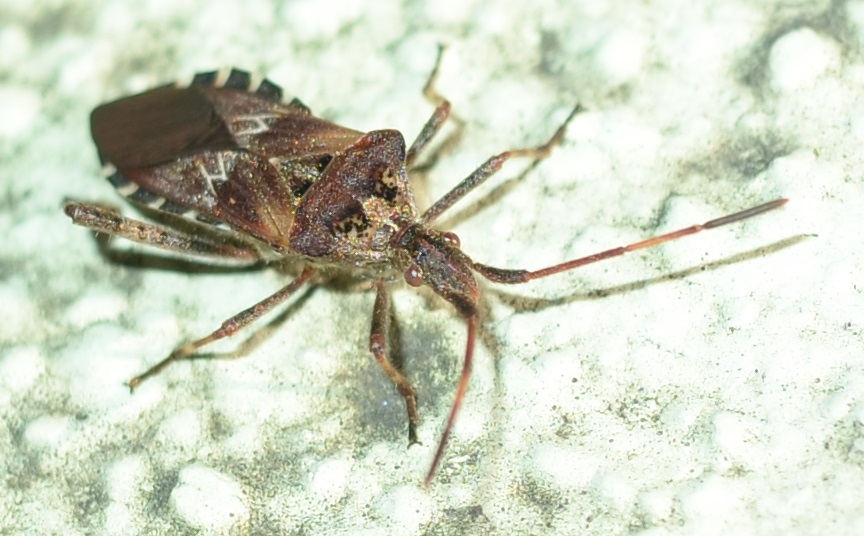
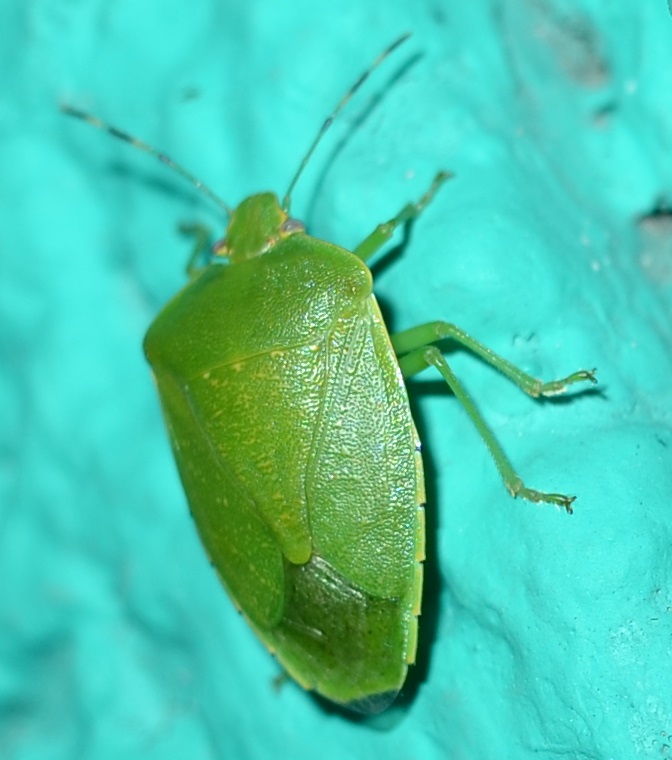
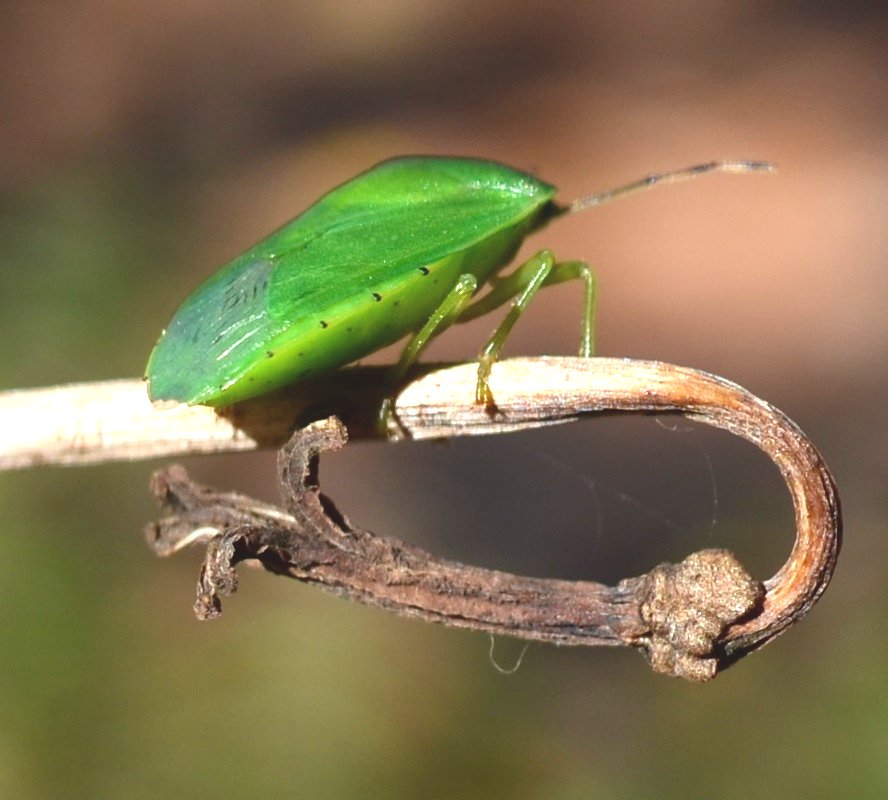
The flies rallied a bit this week. That faithful orangeish spotted-wing fly was still here. So was the march fly, Bibio longipes.

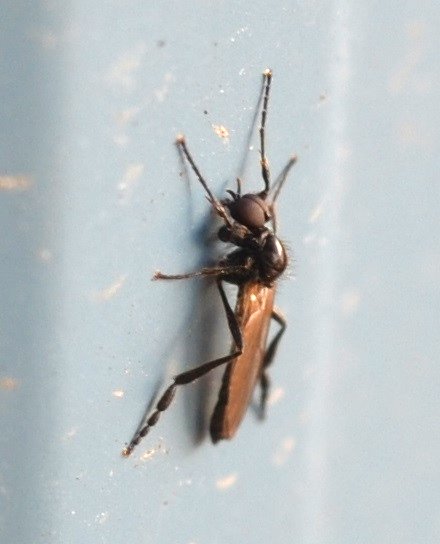
A couple of crane flies.
(I'm not sure at all about this first one) but the second one looks a bit like one of those tiger crane flies. I need to work on my wing venation so as to be able to do a better job of ID'ing! But this third one may also be a cranefly...It seems to have those cute little fly antennae.
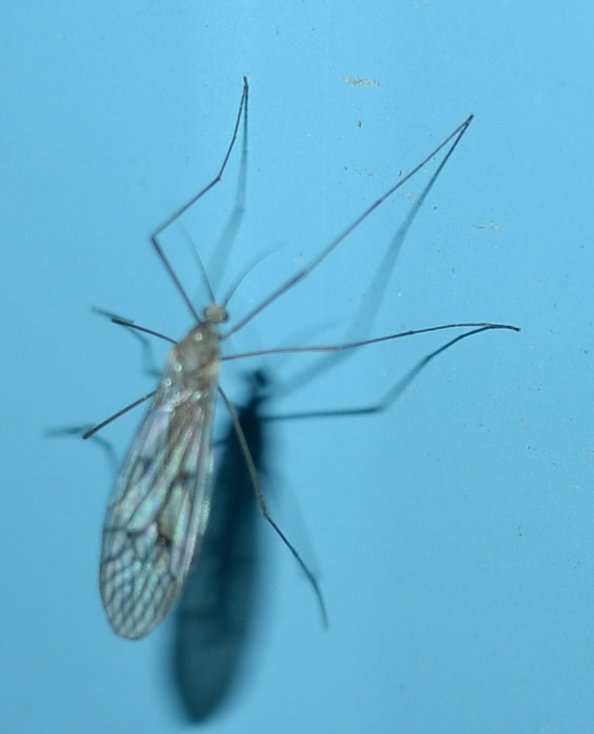
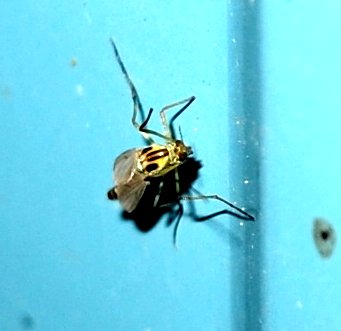
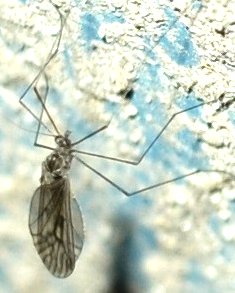
This very dim image is of a pure black fly (still unidentified by me); then we still have mosquitoes, I believe. This one is a male if it's a mosquito (no biting paraphernalia). The gnats seemed to have skipped most of the summer but they also seem to be back. This last picture is from Sue Farley, who was sipping tea outside, and found this bee on the edge of her cup. (Shall I spoil the story for some of you? It is not a bee, but rather a hoverfly. I believe it's of the Eupeodes genus.)

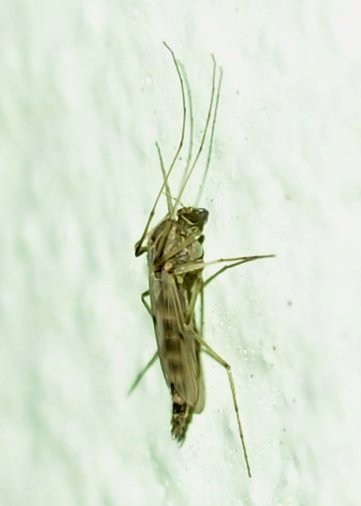
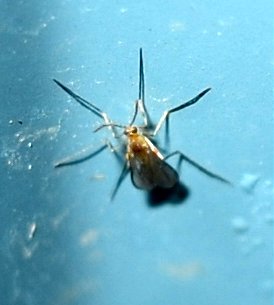
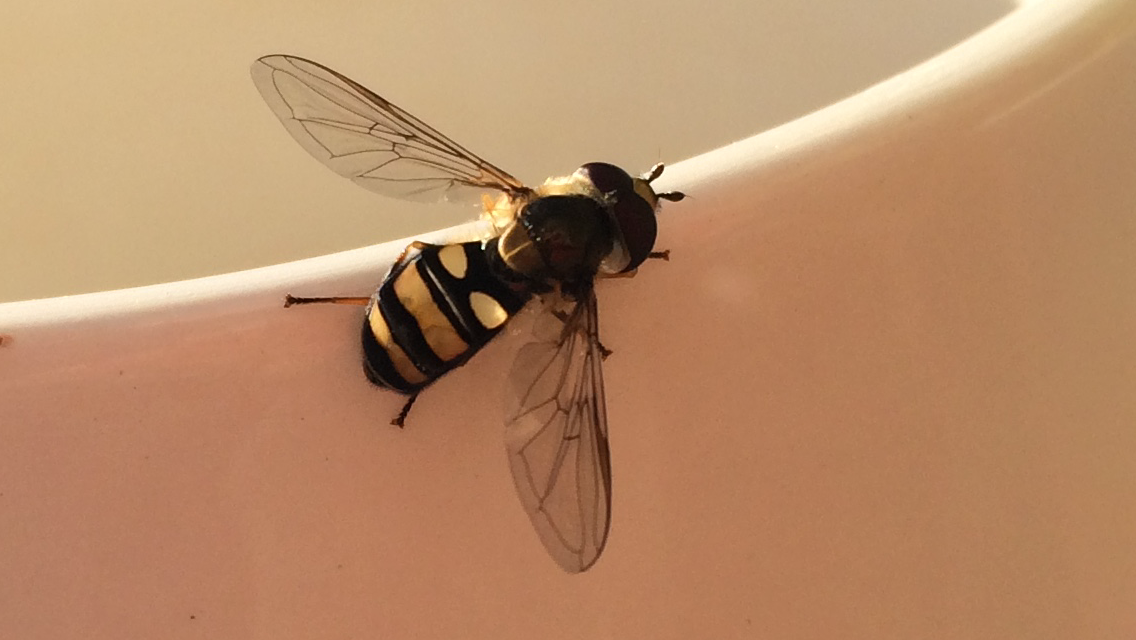
I haven't seen another green lacewing, but the brown ones are still going. This is how one looks when it has not been pierced by a damselfly. For quite some
time I haven't seen a moth, but yesterday one showed up.
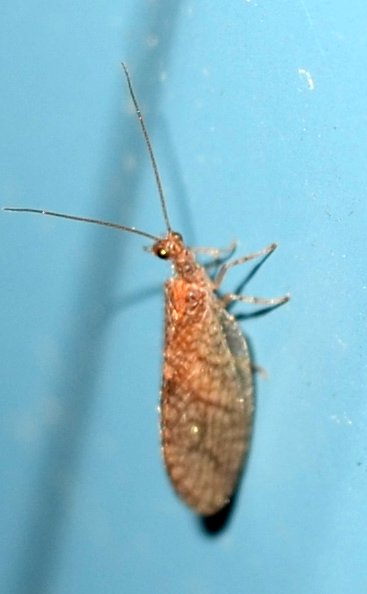
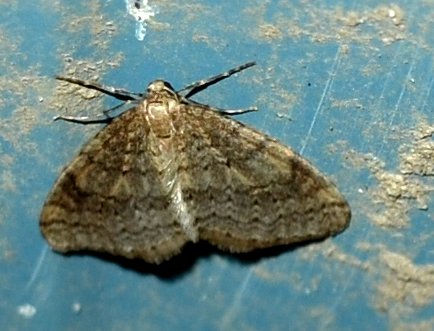
Orthopterans have been scarce or out of sight since the last time I saw a katydid. But a couple of days ago, this strange cricket appeared on the shop wall It is a jumping bush cricket. Look at the length of those antennae. Can you tell if it is a male or female cricket? Hint: that looks like a bit of fluff on the end of the ovipositor.
 11 3 15 4.jpg)
Spider lovers of the world, unite! Here is one harvestman, a young one. Then I'll let the spiders out to come see you. They've been asking, "but where are the homo sapiens? Are they really sapientes?" (That's spider for "are they really smart?") This nice black or dark grey one was scurrying along the door rim INSIDE the shop, trying to distract me, and it worked. I believe it is a Ground Sac Spider (Trachelas) Female. The third one could be lots of different spiders.
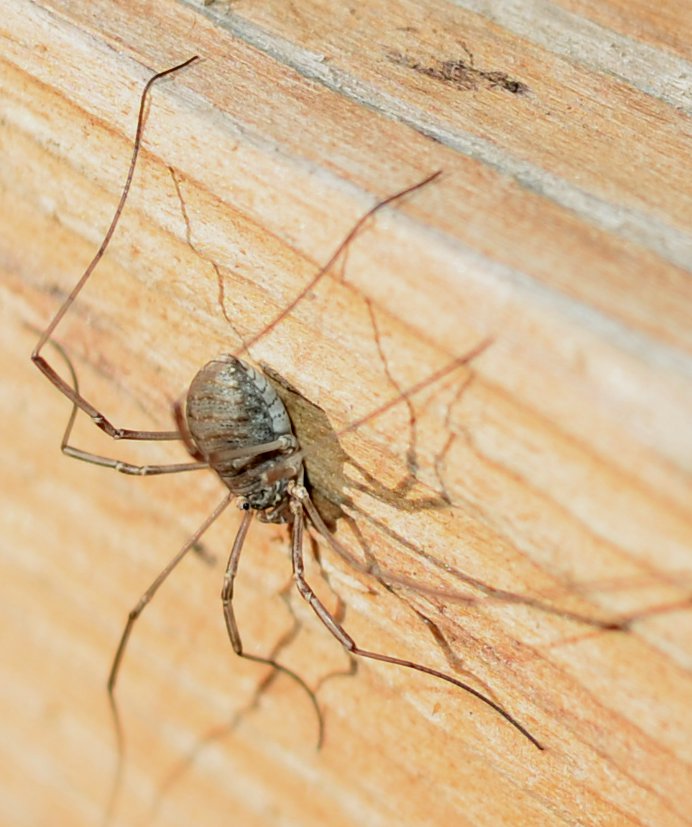
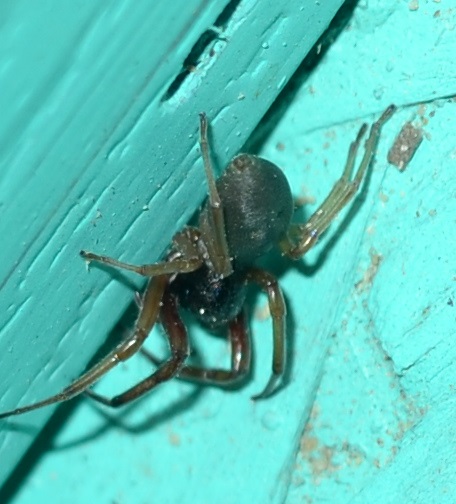
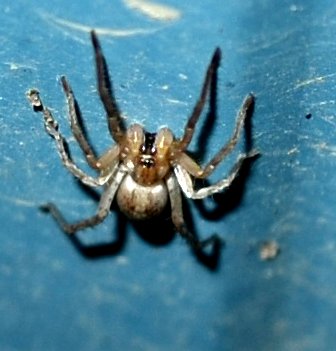
Here is a lovely ground crab spider. Again you can see how stockily it is built compared to the little northern crab spiders. This one is a female, unlike the next one, which is also a ground crab spider. The third one is a fishing spider, which I hadn't seen in months. The give-away is the two colums of white dots on the abdomen.
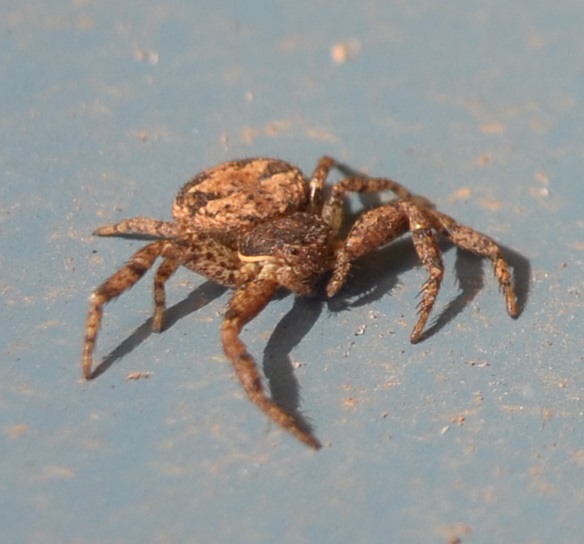
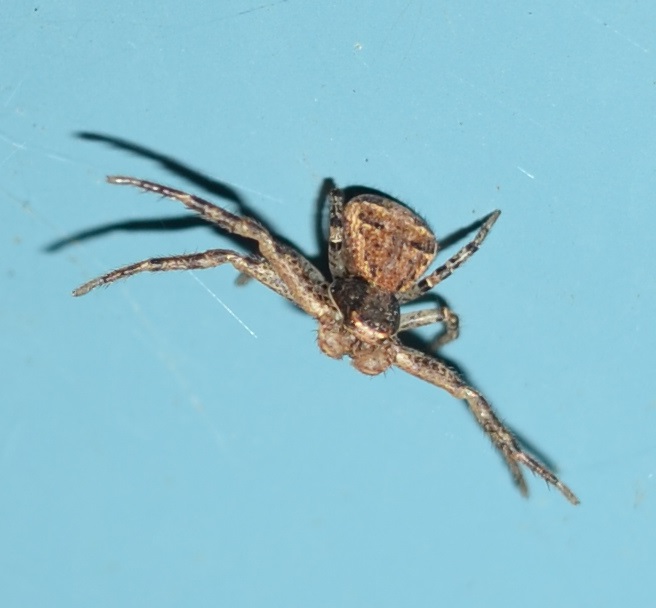
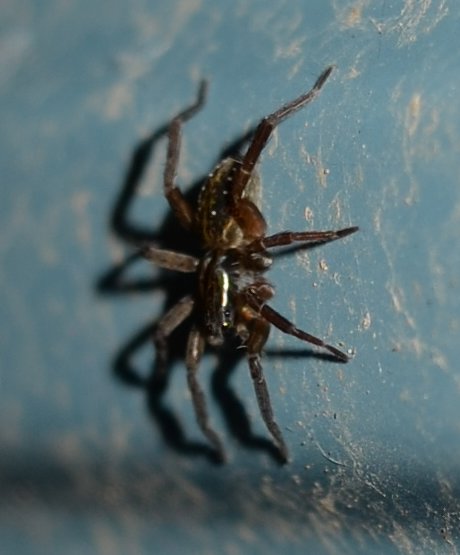
Here's an old friend, the pirate spider. I think it's the first time I've seen one this big. The second one may be a sac spider(Clubionidae). The other one I have to work on!

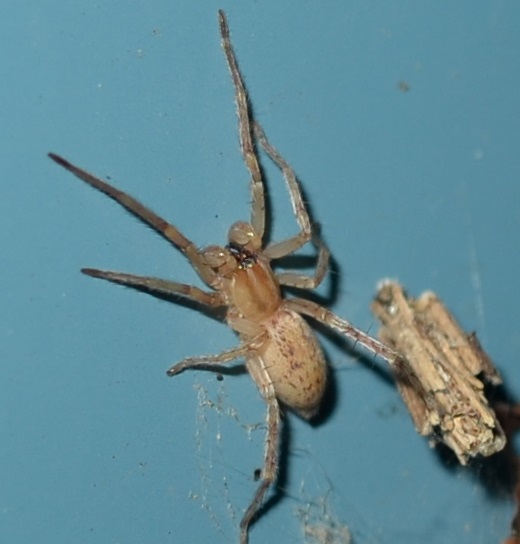

The next two spiders are both called Cross Orbweavers (Araneus diademmatus), because of the cross-like figure on the abdomen. I finally looked up this coincidence and found (of course) that the yellow-orange one is the male and the darker one is the female (which we saw in adult form on October 11)! Another case of sexual dimorphism. It has been since last fall about this time that I last saw the male. This last spider is an example of how much more beautiful the spider is than the brickwork around the bottom of the house. I believe it is a ghost spider (genus Anyphaena). I only just recently pulled a fairly heavy overgrowth of ivy from the wall, and the remaining bits along with some old webs make a nice motif of anarchy. Oh, yes, the little strokes in back of the yellow cross spider are fragments you get when you yank ivy from the wall.
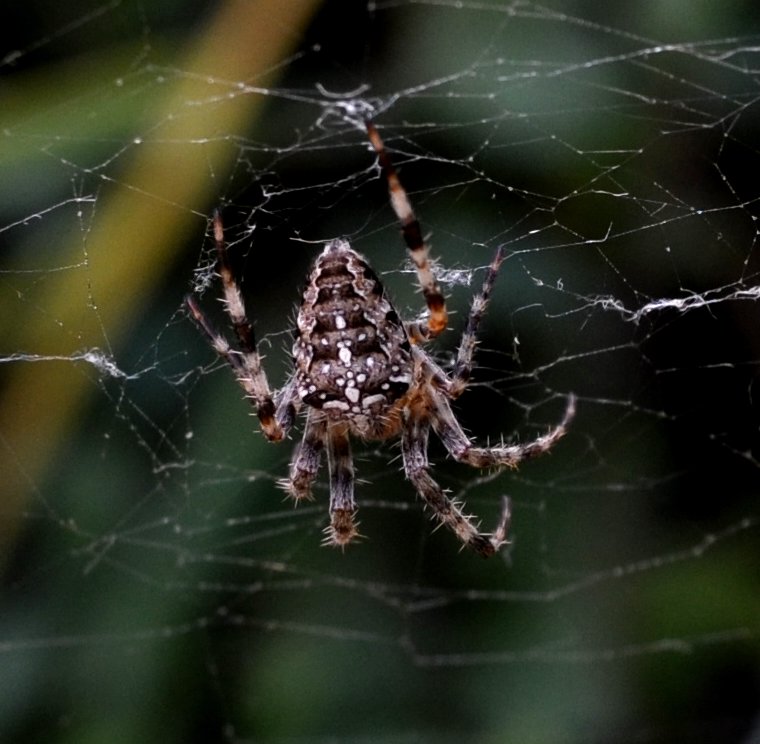
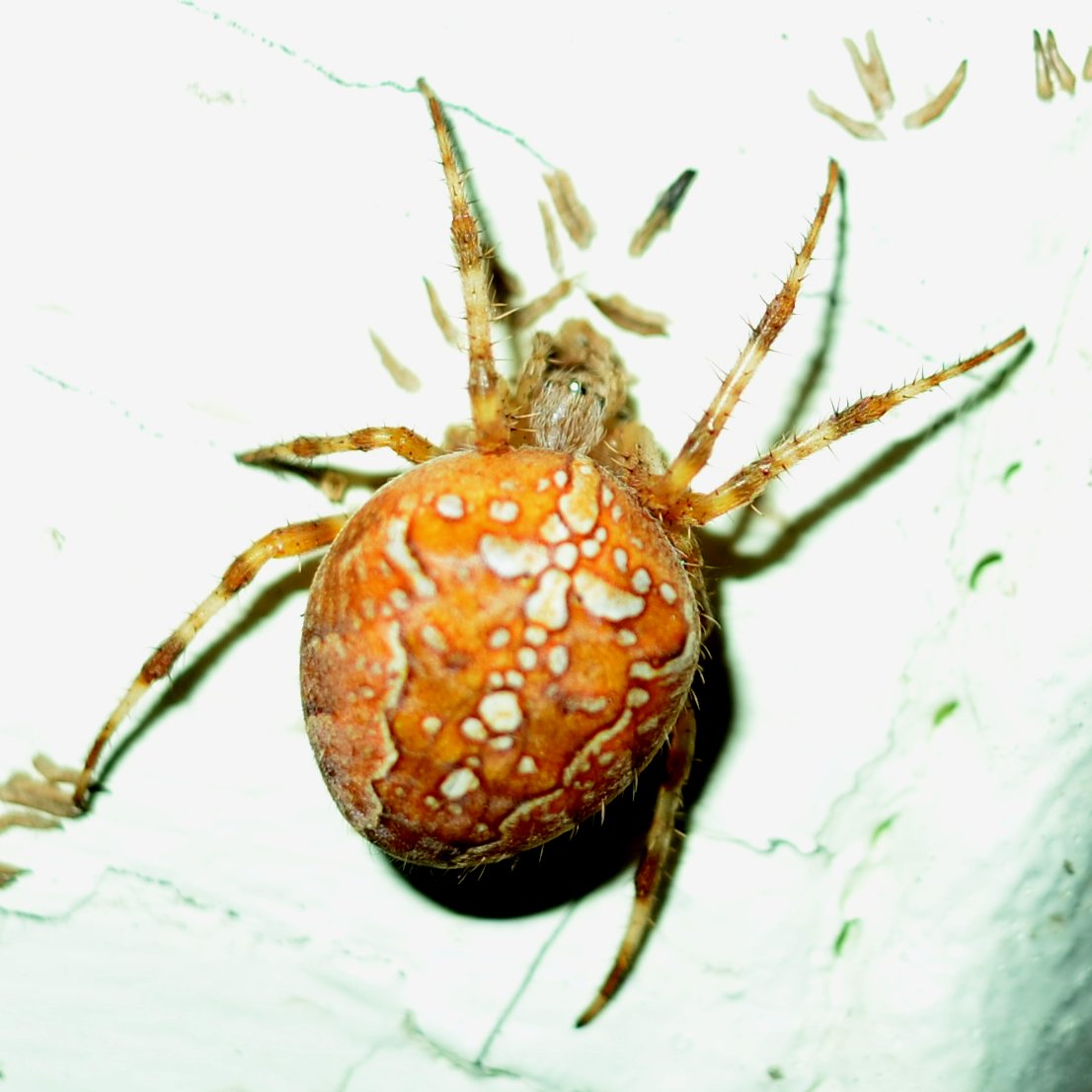
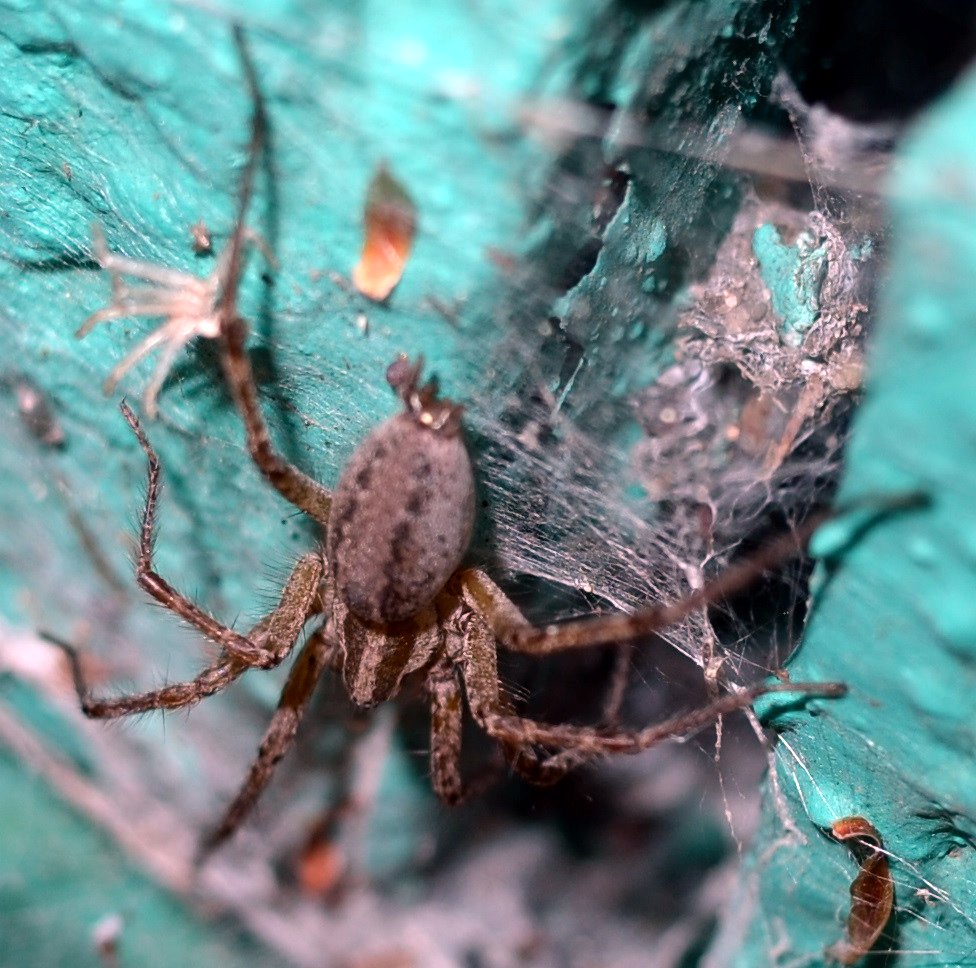
Despite the fact that several of the days in this past week were balmy and warm, the last two days have not been much in the way of insect-rich. We must just play it by ear to see if there will be a full-length blog next week. The snow may soon be falling - we don't know what the next days will bring. I have had a wonderful time this summer watching the drama in the garden and all the characters who played their parts. Keep in touch!
Note to Albion readers: Pat Visser of Albion announces that she has a "mother lode" of milkweed seeds for anyone who would like to plant some. She'll have packets available in a container on her front porch for anyone who stops by (1209 Jackson St.) or they can email her and she'll deliver. Wow, Pat, I will be dropping by. When my workshop was being built last year, my milkweed was the victim.
Back to November 1
On to November 15
Back to 2015 menu
Back to main menu
copyright Martha O'Kennon 2015




 black carpenter ant (Camponotus pennsylvanicus) 11 4 15.jpg)

 -- Lixinae -- Lixini -- Lixus 5 30 15aa.jpg)








































 11 3 15 4.jpg)











